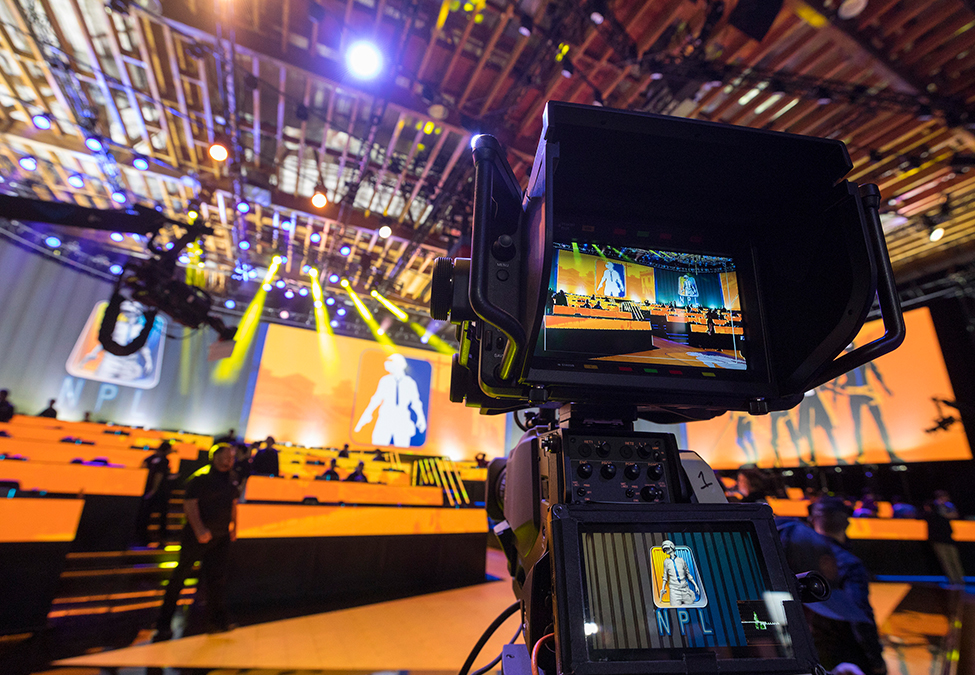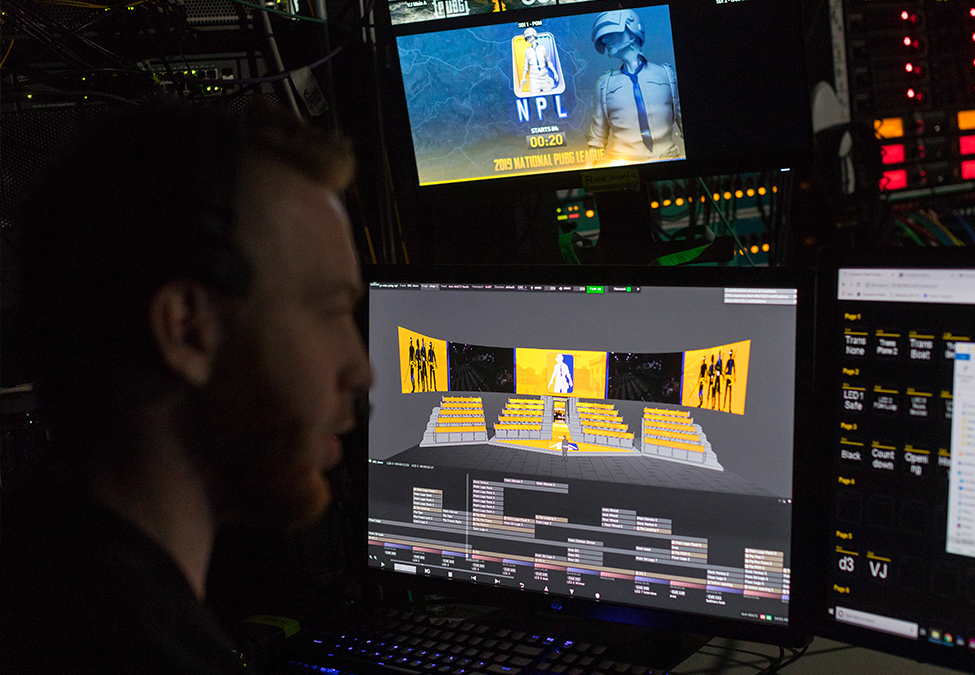Viewership is the key that has really unlocked the potential of the esports industry. Professional matches were being viewed on low-quality streams to small numbers of viewers until platforms such as Twitch came on to the scene.

Fast forward to now and we’re witnessing millions of fans watching a host of titles from around the world. Not only have the numbers improved, so to has the production quality of such events; it’s commonplace to see in-depth analysis and visual effects at any given esports event in 2019.
Ahead of his panel at ESI London, ESI caught up with Jonathan Lyth, Technical Director of ES Broadcast to get a glimpse of what his company is providing to the industry and the fans who watch attentively.
Esports Insider: Why do you think events like ESI London are important?
Jonathan Lyth: It’s safe to say that esports is the growth sector now. Audiences have grown by 50 percent in the past year, with almost one billion people around the world having watched esports. Growing that fast, it would be easy to overlook the need for esports leaders to get together and pool their resources in terms of discussing their common goals and challenges and sharing best practices. ESI London is a great chance to do that.
It’s also an opportunity to explore how esports can learn from peers within the sector and can benefit from the expertise available from other industries – not just broadcast, but things like brand growth and market cross-over, compliance, and monetisation and investment. As a supplier, it’s a brilliant opportunity to continue to grow our awareness of the direction esports is taking, and to understand better how we can add real value to esports.
“Esports is already trail-blazing in the way it creates and shares content”
ESI: Tell us a little bit more about your work inside and outside of the esports market, and what you think you can add with your expertise.
JL: ES Broadcast has been providing live acquisition equipment and systems for professional sports broadcasts at the highest level for more than 10 years, building TV studios, outside broadcast trucks, portable production units, post production suites and other broadcast and playout facilities. That experience translates into esports in the shape of projects like OGN’s new 35,000 square foot Esports Super Arena in Manhattan Beach, California, which ES Broadcast was the major system integrator for. That’s the level of expertise we can bring to esports broadcast facilities to ensure events are delivered to all spectators – live, online, and television – without issue.

ESI: You’re speaking on ‘Shaping the future of the esports viewing experience’ – what was it about this topic that compelled you to talk about it?
JL: Esports is already trail-blazing in the way it creates and shares content, pushing the boundaries of broadcast workflows with the complexity of its live productions. It’s exciting to be joining the conversation – working with content producers who are asking ‘what could our production look like?’, listening to where they want to take esports, and working together to deliver an immersive, engaging viewing experience.
There are a couple of key areas of interest for anyone looking at how esports production is developing.
We are beginning to see is all levels of esports aspiring to deliver higher production values, not just the major events and leagues but the mid-level and even grass roots producers. This throws down the gauntlet to content producers to investigate the higher picture quality, graphics design and audio production that supports this aspiration. Production companies who have found their way to date perhaps now are finding they need some assistance to understand the technology to deliver a more polished product.
Secondly, on the major installations we’re seeing larger productions running on multiple layers of sub-mixing so directors can make some sense of all the content available to them. That’s everything from team/POV cameras and webcams to gamer screens and observer pens, on top of their main presentation camera channels around the venue. Output feeds are being sent to several places at once – venue feeds, live streams, Twitch TV, YouTube. All of this is opening up great opportunities to develop advanced systems that really push the envelope on control room design and automation.
Our skillset and experience – delivering a similar diverse range of services to traditional broadcast and live production companies – are a perfect match for where esports is headed.
“What we are trying to do is bridge that gap between esports and traditional broadcast”
ESI: How do you think esports broadcasting will develop overtime, compared to what you’ve seen in other industries?
JL: Esports has it roots firmly set in nonlinear broadcasting. Delivering direct to web-based platforms means the restrictions of traditional sports delivery are by and large lifted. In the same way Netflix and Amazon have stolen a march on satellite and cable suppliers I think esports will be open to adopt new technology much faster than traditional broadcasters.
Take ultra-high definition and high dynamic range: while traditional broadcast wrestles with how to deliver these features in future, esports is in a position to take advantage of them immediately. Esports already has a minimum standard of 1080p59.94(60) and is rapidly moving into UHD. For the large audiences watching esports on mobile devices, where resolution is less critical, HDR will greatly enhance what they’re seeing on-screen – from in-game footage to the presentation feeds from events arenas.
Moving on from there I think we’ll start to see more of a push towards machine learning and AI technologies. With esports’ natively data-rich environment, this has to be something to explore. Auto-directing and auto-replay technology have been in development in for the last couple of years and although they’ve not been unleashed on the market, they’re not far away. Given the major benefits of simplifying esports workflows – so, relying machines that use data to predict and decide when to cut between shots, instead of having to work with multiple manual sub-mixes – it seems logical that this technology will be adopted in the short- to mid-term, with the added benefit of improving production values.

ESI: As a relatively new player to esports, what goals are you hoping to achieve in the market as both a supplier and broadcast expert?
JL: What we are trying to do is bridge that gap between esports and traditional broadcast. For many broadcast manufacturers, engineers and systems integrators, they are playing catch-up in terms of understanding the world of esports live production. The vast number of feeds, the duration of tournaments, the audio complexities: they’re all things that sit outside the established norms of the broadcast world.
We’re helping manufacturers understand how their products are being used and how tech can be designed to deliver what esports users need. We’ve built great relationships with the key technology brands and work closely with them to deliver bespoke solutions for our clients.
Looking at it from the esports client perspective, what do we offer? Well, we’re an experienced broadcast systems integrator, but we also strive to understand the esports market. We know what it takes to deliver high-quality live content from our work with industry leaders in sports and events production markets. But we also recognise that traditional workflows don’t necessarily fit with esports, so our ethos is very much one of listening and collaborating, not dictating.
Our goal is to bring our extensive broadcast knowledge to esports, boosting the production value of live events so that what the audience sees, both in the venue and on streaming platforms, is something mind-blowing.
As a final aside, away from our commercial aspirations for esports, we’re also trying to bolster the technical understanding on both sides of the esports/broadcast coin. I’ve started a LinkedIn group as a platform for discussion about the technology we are seeing in esports – how it’s used and what can be improved. The group is open to all interested parties at https://www.linkedin.com/groups/8826015/ and with the hashtag #noclipping.

